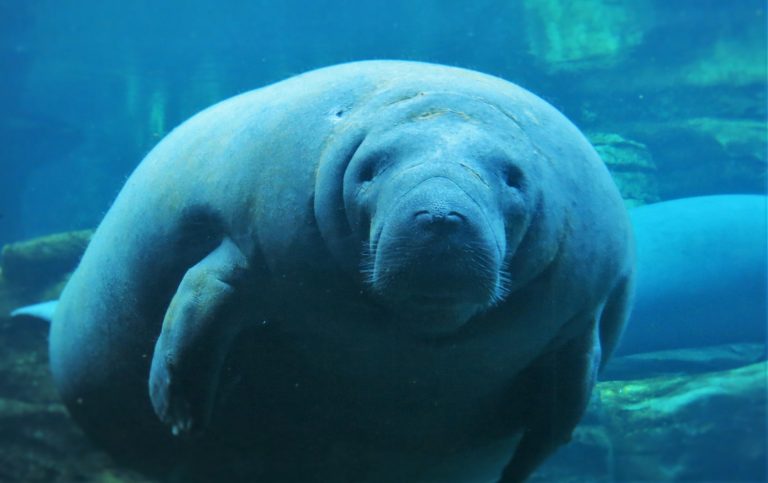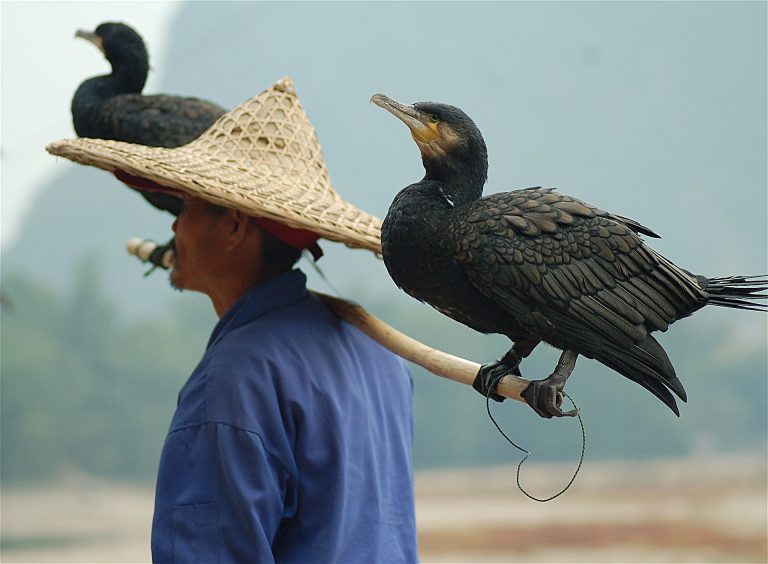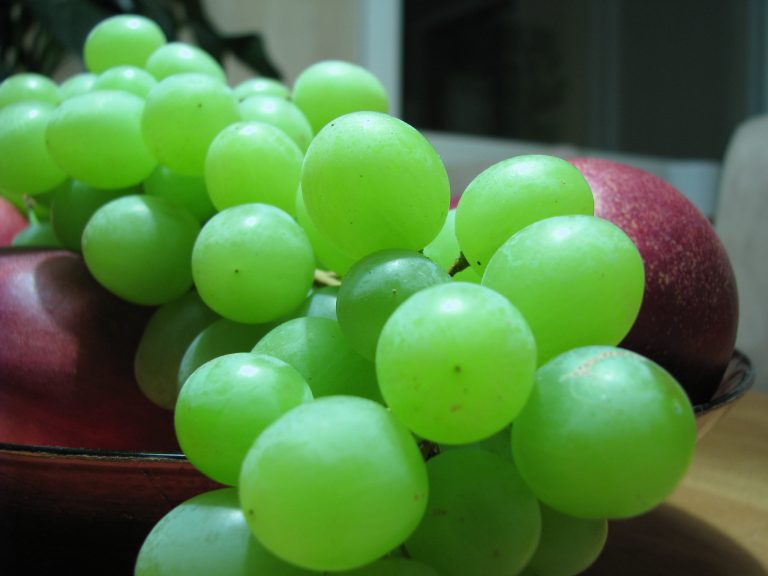Manatees, or sea cows, are unusual marine mammals that graze on seagrass and other aquatic plants in warm, shallow waters. It’s hard not to love these large, gentle and slow-moving creatures. They may not be as formidable as a whale nor as fast as a dolphin, but they are captivating nonetheless – even Christopher Columbus was convinced he saw a mermaid in these sluggish swimmers. Starving manatees is a reality that is heartbreaking for many.
For various reasons, manatees are facing a diminishing food source. Although they were recently removed from the endangered species list, these marine mammals are struggling with multiple factors working against them. While human intervention can play a positive role in reversing the damage caused by industrialization, it is also important to keep a proper balance in nature, so the manatee does not become dependent on us for survival.
Starving manatees’ lost food source
As of Jan. 28, of the 5,700 to 7,500 manatees living in Florida, 97 of them have been found dead in what the Epoch Times described as a “starvation crisis.”
Between January and February, the number of manatee carcasses “tripled,” said veterinarian of the Florida Fish and Wildlife Conservation Commission (FWC) Martine de Wit.
Last year, 170 manatees died during the same period. Throughout 2021, the death toll reached more than 1,100 manatees, roughly 13 percent of the population.
Success
You are now signed up for our newsletter
Success
Check your email to complete sign up
Experts believe that the primary cause of death stems from a problem that has been plaguing not just the manatees, but the entire animal kingdom as a whole – the loss of food sources.
Biologists have found “thin and emaciated animals” within the warm water areas, manatee rescue coordinator of the FWC, Andy Garrett, said.
Manatees are subtropical animals, which means they require warm temperatures to live in. In the rivers and estuaries of Florida, they retreat to natural springs during warm weather to find an abundant source of seagrass, which grows in shallow and clear water.
Temperature related troubles
Climate change has been cited as a major determinant in the disruption of habitats, and thus, diminishing populations. Warmer temperatures around the world cause water levels to rise, which reduces the sunlight available to seagrass, necessary for photosynthesis. When seagrasses die, manatees lose their primary source of food, and starve. High water is not the only threat to their food source, however.
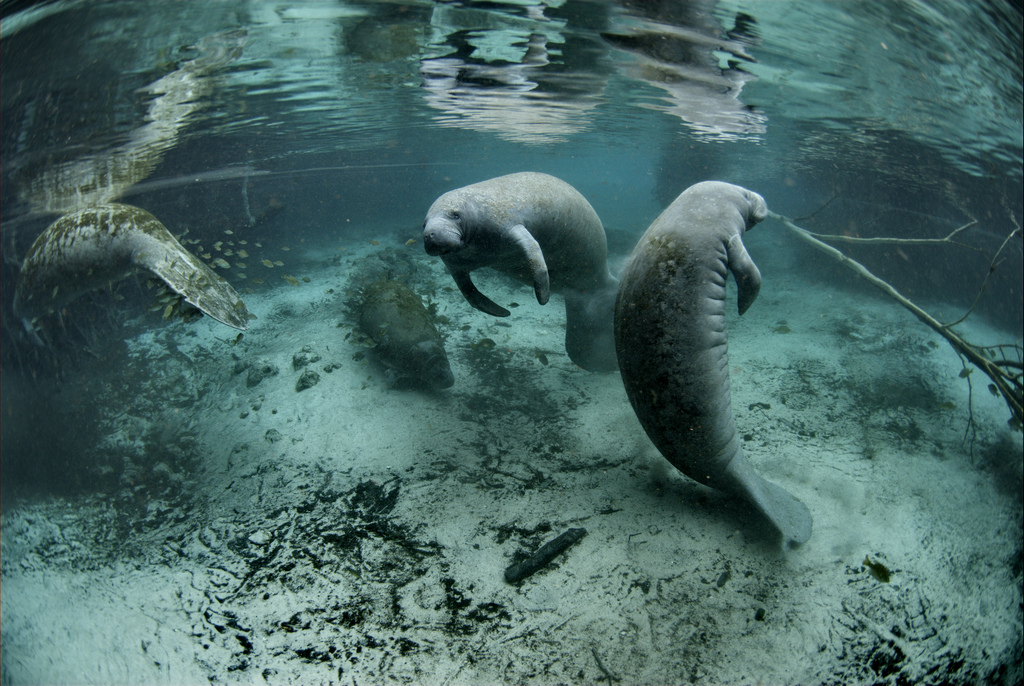
According to National Geographic, most of the deaths occurred in Indian River Lagoon, an extremely diverse estuary located on the Atlantic coast of Florida. Heavy pollution from fertilizers and residential developments seems to have accelerated the death of seagrass, which manatees need to survive.
Along with a reliable food source, manatees also need water temperatures in the 70s to stay warm; anything lower than that can seriously affect them. Florida’s unusually cold weather in 2021 was likely a contributing factor to the high death toll.
Ironically, the recent decrease in power production also has a cooling effect on the surrounding waters, making it less habitable for the manatees. Exposure to red tide, boating accidents, and other human-related developments also play a negative role.
With the loss of seagrass, manatees are dying of starvation, especially new mothers who require more food and energy to nurse their calves. As their mothers die, the calves have to be rescued and placed in sea parks or zoos; but rescue efforts are made difficult when manatees are forced to gather in clusters for warmth in cold temperatures.
To feed or not to feed, a delicate question
In an attempt to save the manatees, the FWC and the U.S. Fish and Wildlife Service (USFWS) worked together to come up with a solution.
Recently, they made a “major breakthrough.” They took it upon themselves to feed the manatees with romaine and butterhead lettuces. Initially, the manatees did not seem interested in the food. Later, the animals began to eat, and eventually ended up relying on the lettuces floating in the rivers.
Soon, manatees were seen swimming to a Florida Power and Light power plant, where the waters were warm enough for the manatees to live in. Concentrated efforts to feed the manatees were made there.
On the coldest of days, around 750 manatees showed up at the site, though how many of them ate is unknown, authorities reported on Feb. 2.
However, the Save the Manatee Club expressed a dire concern about hand-feeding manatees, as feeding them would ultimately disrupt their natural diet of seagrass. Should humans stop providing, the manatees would again lose a food source and starve. It is even considered illegal to hand-feed manatees.
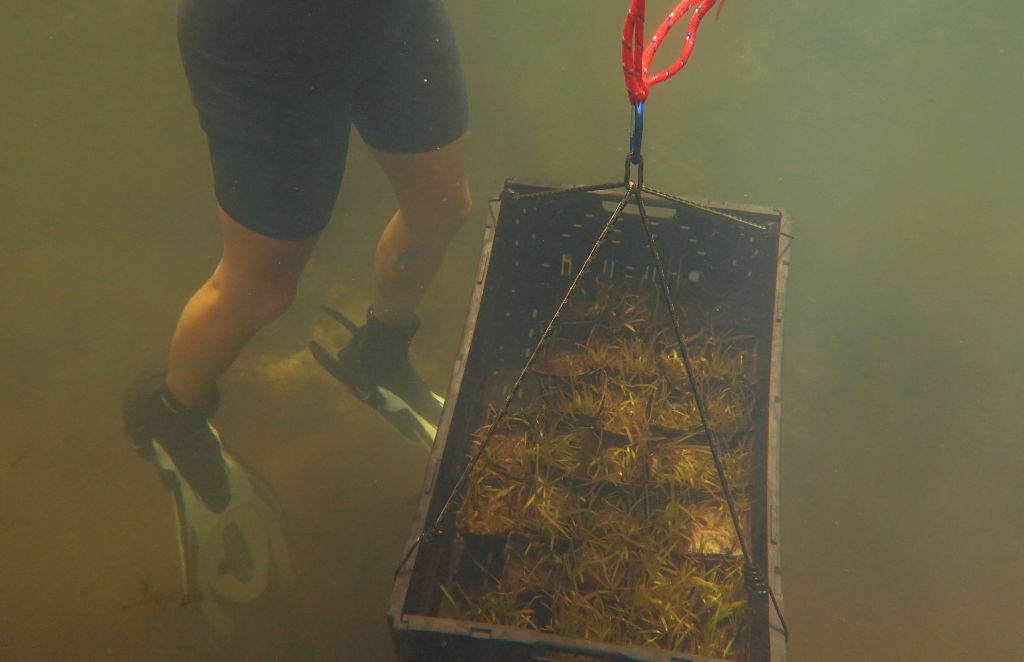
As such, conservationists are working on preventive and recovery measures to help restore a natural environment for the manatees again, reducing the reliance on power plants and human intervention.
There are now efforts to replant the seagrass, but the action requires permission from agencies. Donor seagrass beds are almost impossible to manage, and they need clean water to survive. Improving water quality can be done by restoring clam and oyster beds, but it is not an easy task.
Conservationists and wildlife advocates believe that the problems could have been avoided. Though political action had been assured, nothing was done to protect the manatees. The FWC was even sued for not following the law that required them to confirm protected habitats for manatees.
Regardless of the obstacles, the organizations plan to continue their efforts to improve water quality and restore beds of seagrass so that the manatee may one day thrive again.
On an individual level, we can all help by spreading the word about manatees and the threatening conditions they are facing. At the same time, it is important not to overreach, causing interference to the natural cycle of life. By enabling experts to focus on rebuilding their environment, we can help restore a proper balance so that the animals can live without our assistance.



